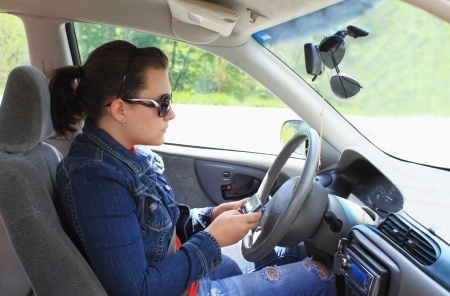 One of the growing public safety issues in the United States is distracted driving. While there have always been distractions for drivers, the rise of cell phone use has increased car accidents, since today’s phones are used for more than just talking. You have to look at a phone to text or to surf the Internet.
One of the growing public safety issues in the United States is distracted driving. While there have always been distractions for drivers, the rise of cell phone use has increased car accidents, since today’s phones are used for more than just talking. You have to look at a phone to text or to surf the Internet.
Among the younger generations, smart phone use is especially rampant — and so is distracted driving. Teens are inexperienced drivers as it is, and when you add in distracted driving, the results can be devastating. The resource Distraction.gov includes a number of troubling stats about distracted driving. Two of these facts are especially relevant to younger drivers:
-
10 percent of all drivers under the age of 20 involved in fatal crashes were reported as distracted. This represents the largest age group, proportionately, of those who are distracted in fatal crashes.
-
At any given moment during daylight hours, there are about 660,000 drivers using phones or other electronic devices while driving. A large number of these are probably teens.
It’s important to talk to your teen about distracted driving, and make sure that he or she understands the dangers associated with driving at times when they aren’t paying full attention to what is happening on the road.
Educating Your Teen
First of all, it’s important to educate your teen about distracted driving. Make it a part of the general learning process as he or she learns to drive. You can use stats that indicate 1.6 million crashes are the result of texting while driving, or that 11 teens die each day from texting and driving, but really, you need to make the absence of distractions a major part of the learning experience.
Of course, this means that you need to set the example for your kids. If your kids see you driving distracted, they will assume that it’s acceptable for them. Before you start educating your teen about safe driving practices, you need to follow these practices yourself. Don’t text or check your email while driving. Use hands-free devices when you have to talk on the phone in the car. Make your good example part of your teen’s driver education.
Set Rules About Distracted Driving
As with other privileges in your household, you need to make it clear that driving is a reward for good practices. Make a rule against texting and driving in your home, and set consequences for breaking these rules. Talk about appropriate punishments with your children. Get them involved in the process, and they will be more likely to follow the rules. Talk about the rules and the consequences, and make sure you can carry them out.
You can make it easier to enforce the rules with the help of certain apps. There are apps that detect your speed, and can disable texting when the car reaches speeds of 10 miles per hour. Additionally, you can find apps that will automatically text people back, letting them know you are driving and will text them when you have stopped. At the very least, it’s possible to use apps that turn text messages into audio messages — and allow you to speak to respond, rather than type.
If you are serious about getting rid of distracted driving in your cars, your teens will learn safer driving habits. Plus, if you follow your own rules, you will become a better driver as well. This can reduce the chances that you will be injured in a car accident, as well as save you money on insurance premiums and other costs.
How to Help Your Teen Understand the Dangers of Distracted Driving. by James Sorrels
